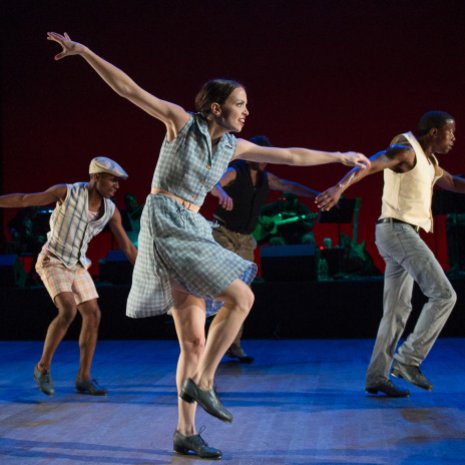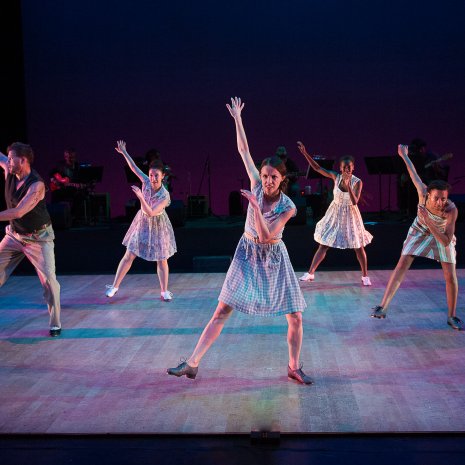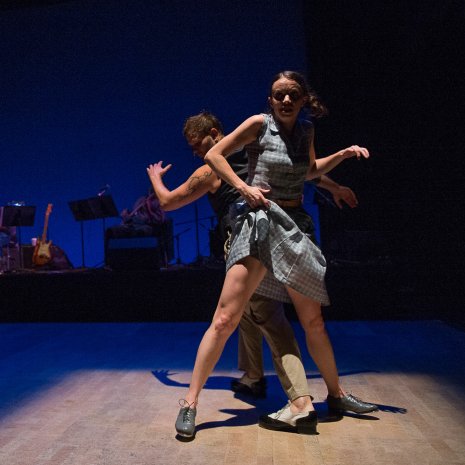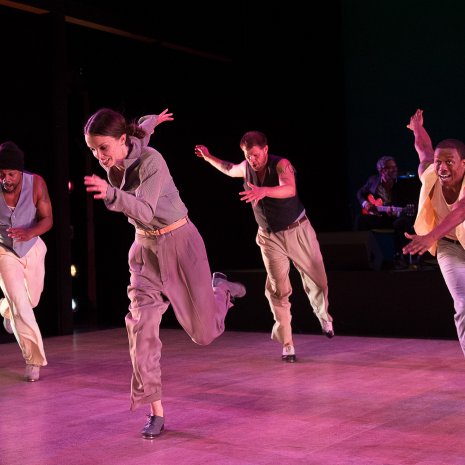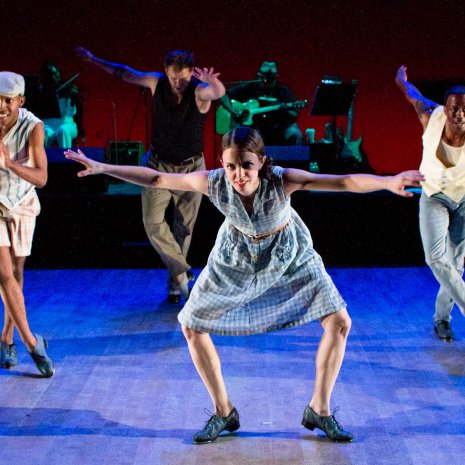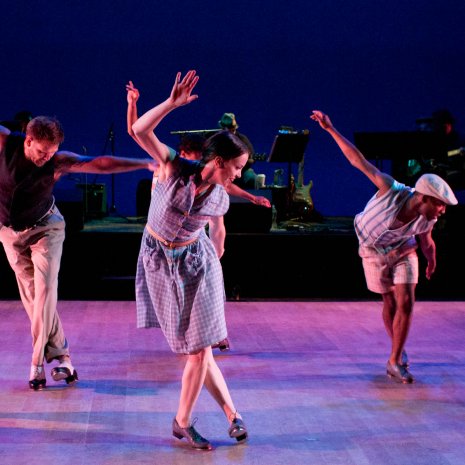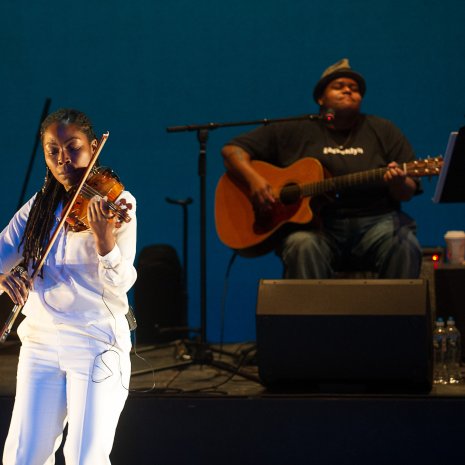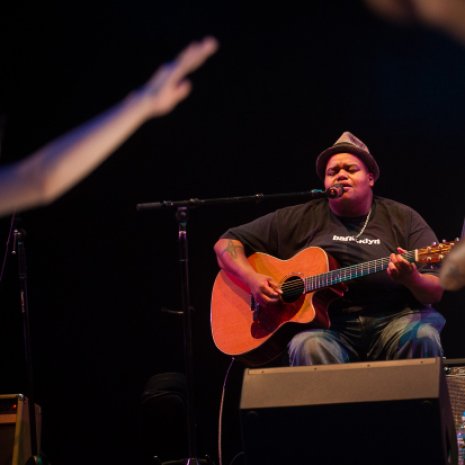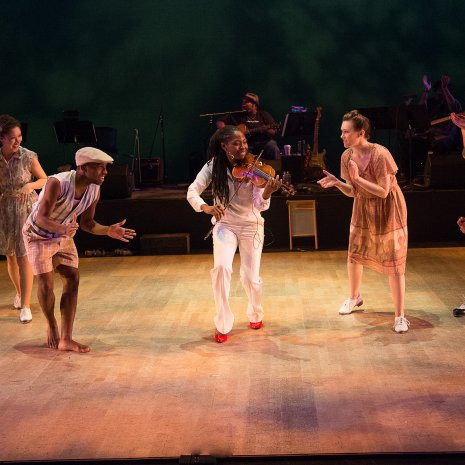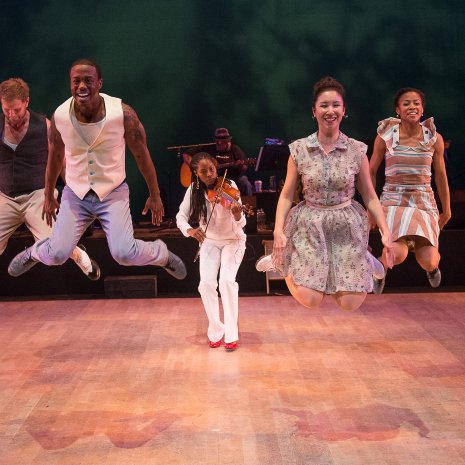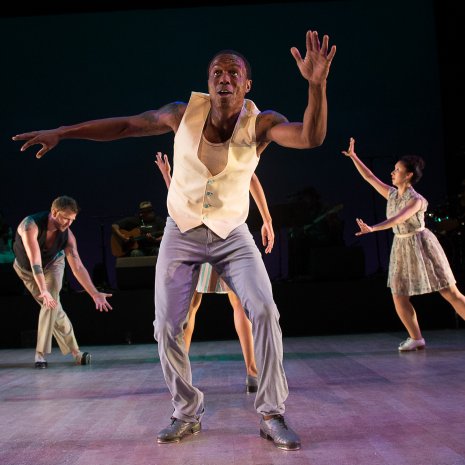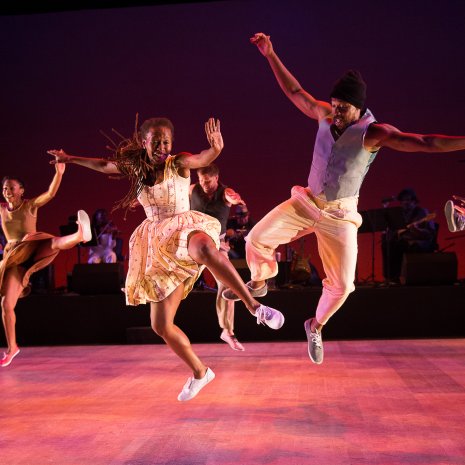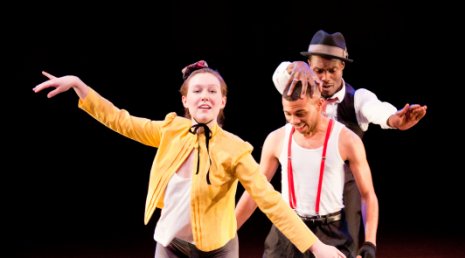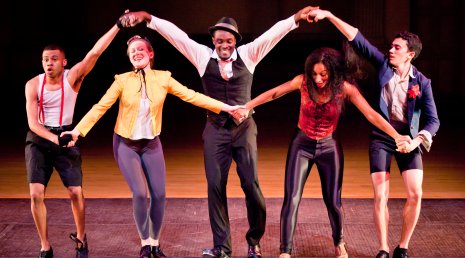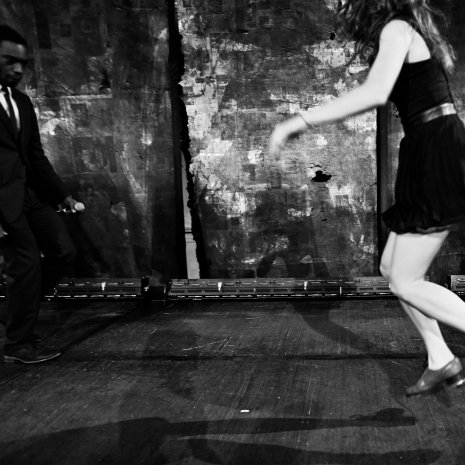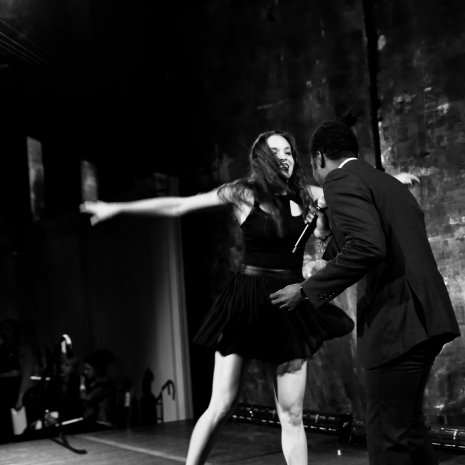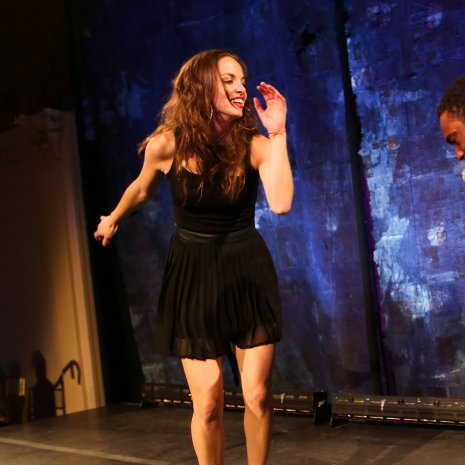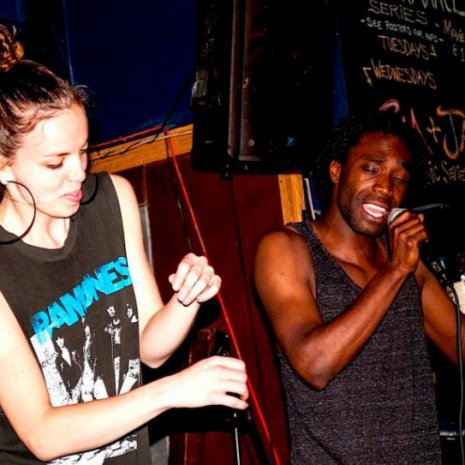Jazz
MBJ:
The tap genre clearly owes a great deal to the jazz idiom, but coming out of the Black&Blue, Noise/Funk era in tap, it is probably fair to say that some of the forms most strident innovations have come from children of hip hop. Where do you live along this musical scale, and how does your embrace of contemporary performance distort the line between these musical aesthetics?
MD:
I was born in 1979 and I probably started tap dancing by 1983-4.
Music shaped so much of my artistic, political and cultural consciousness and perspective as a young person. In fact, music had a much stronger role in forming the foundation of my artistic voice than dance. I have always been passionate about an incredibly wide range of music so where I live along the jazz-to-hip-hop musical scale includes places deeply within both genres and places way further out. This is probably going to give you way too much detail (though it barely scratches the surface) but I thought it might help to give you a reference for possible future discussion. Here goes:
Elton John and Janet Jackson Rhythm Nation Tour were my first two live arena concerts. And before I was ten years old, my first musical loves were two songwriters with messages about injustice, Tracy Chapman and Cat Stevens; they both also inspired me to learn to play acoustic guitar, a few chords from my dad and the rest by ear.
By the time I was twelve I was obsessed with the hip-hop and R&B of the early nineties, (A Tribe Called Quest, Ice Cube, Digable Planets, Mary J Blige) which later led me to the music it sampled – my favorite was politically charged funk and soul of the ‘70s - Curtis Mayfield, Stevie Wonder and George Clinton’s Parliament/Funkadelic family, and voices like Mavis Staples and Otis Redding.
Shortly after that, I fell in love with Jazz. I knew I loved Cab Calloway, Duke Ellington, and other classic swingin favorites from tap class but it was dancing to the heads of Charlie Parker tunes with my teacher, Gene Medler, along with his copy of Thelonius Monk with John Coltrane album that changed the game. (I should note here that I still have his copy of this album! Gene, 20 years later, shit! I am so sorry!!)
Any given high school night, I could fall asleep to Monk’s “Ruby My Dear” just as easily as I could Pink Floyd’s “Wish You Were Here,” or Bjork’s “Anchor Song.” I was also a part of our local ska/punk/indie scene and listened to Pearl Jam, The Red Hot Chilli Peppers, and Nirvana repeatedly. I even put in some serious time listening to Phish’s first four albums but never more than Prince and the NPG. Towards the end of high school I became more and more obsessed with the blues (Robert Johnson, Howlin Wolf, later Skip James and Chris Whitley) as well as percussive guitar playing coupled with politics (Ani Difranco) and the world of unbelievable local bluegrass festivals that brought some of the world’s best musicians to our local Appalachian Mountains.
All this and I haven’t delved into my favorite DJs, turntablists, nor have I discussed how my favorite hip-hop artist’s flows influenced my improvisational phrasing (many thanks to Rawkus Records). I can’t even get into that without talking about Gregory and Savion.
As you know, Gregory Hines and Savion Glover were musical pioneers in tap dance. Gregory brought a completely unique funk sensibility to the form, and his execution of that form started to transform tap dance vocabulary. And Savion was a fucking revolutionary. I’m sure you remember when Noise/Funk came to be, no one had ever seen or heard anything like it. It wasn’t just the visual/rhythmic/energetic hip-hop aesthetic, it was the utterly unique and innovative vocabulary.
It is very much because of Savion and his influence that I am interested in distorting the line between hip-hop/contemporary culture and jazz. As a hoofer/rhythmic composer, he is one of the most direct and profound musical and technical influences I’ve had in my life.
This is not to say that my embrace of contemporary dance performance is insignificant because the impact of what I’ve been exposed to in that world has been huge. My mother danced in Eliot Feld’s first company and, through her, I have seen a significant amount of his work over the past two decades. His work has had a tremendous impact on my artistic perspective and my curiosity as a choreographer. My mother was also a professor of dance at Duke University and I was struck by countless contemporary dance performances at ADF every summer. More generally, I would consider the role of contemporary dance’s influence on me as one which provides non-traditional context to work rooted in and grappling with its relationship to tradition.
Tap's original context was "the streets", the street corner, the plantation, the city square. Then it moved to the vaudeville stage and to the bandstand, then the Broadway stage and the jazz club, then to the movie-musical. I don't think the American public identifies tap dance having a relationship to the concert dance stage or in contemporary dance/art culture. I want that to change. I want tap dance to be so far reaching that, like music, it can be found anywhere...
MBJ:
If you could collaborate with one visual artist living or dead, who would it be? Whose work are you most able to 'paint' with your feet?
MD:
I have too many answers for this. To keep it short:
For my character-based work, it would be a dream to collaborate with Tim Burton. I love awkward and borderline grotesque movement but very articulate rhythm, which I find present in all of his visual work, and the kind of darkness that can both make one vulnerable as well as bring warmth or joy.
Painters: Picasso and Basquiat. I see unreal percussion and passion in both of their work – more so than other favorites of mine like the abstract expressionists. I am equally obsessed with their aesthetics, their themes, the way they reflect society and circumstance and how their work makes me feel.
I certainly can’t paint these images or ideas with my feet but I’d be interested in working with a photographer like Don McCullin whose images of suffering and injustice brought about social and political change.
MBJ:
Michelle you are such a beautiful soul I can barely imagine how all that radiance fits into one body...your memories, honesty, and analysis all sing to me. I’m so grateful to you for entertaining these questions.
MD:
Bamuthi, I have such admiration and endless respect for you, your artistry and your work - its unreal to have this exchange with you - thank you, thank you, thank you for your guidance and patience!


